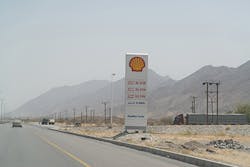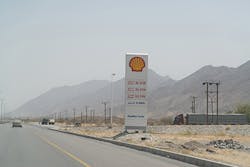The $60 oil ceiling
COMPANIES AND INVESTORS SHOULD PLAN FOR AN EXTENDED PERIOD OF CAPPED PRICES
AARON S. TAYLOR, CHILMARK PARTNERS, CHICAGO
THE DRAMATIC MOVE in the prices of oil and natural gas in late 2014 and early 2015 poses a challenge to both oil and gas companies and investors, who are now faced with a significant transformation in the economics of the oil and gas industry.
The key question currently facing companies and investors alike is how long the current low price environment will last. While they may rebound from the $40/barrel range, we expect that oil prices, especially for West Texas Intermediate grades, are likely to remain capped near $60/barrel for a sustained period of time, absent a significant geopolitical event or a change in OPEC strategy that removes a substantial source of supply from the global oil market. We also see continued short-term risk to the downside to the extent Iranian oil fully enters the global markets, the summer storage drawdown in the US is insufficient, or the Chinese economy slows substantially.
The recent oil price drop is primarily driven by a surge in supply. Demand growth worldwide over the past four years has been relatively steady at around 1 million barrels per day each year. Supply, on the other hand, has grown more quickly over the past two years, and the vast majority of the incremental supply has come from North America.
Since 2013, the production growth in the US alone has been about 60% greater than global consumption growth. While a drop in OPEC production in 2013 almost entirely offset the increase in North American production that year, in 2014, North American production growth continued to accelerate while OPEC remained unchanged year-over-year leading to a jump in global supplies.
Of the 2.0 million barrels per day of additional global production in 2014, over 90% (1.85 million barrels per day) came from North America. Nearly all of the North American supply growth came from US shale oil formations where technological improvements in horizontal drilling and hydraulic fracturing have combined to unlock oil resources previously considered to be uneconomic.
The rapid growth in US production and OPEC's refusal to reduce its supply have combined to make US shale producers the swing producers in the global oil market. This new dynamic has important implications on the future price of oil and appears poised to keep a lid on oil prices for an extended period of time for several reasons:
- First, exploration and production in the US is being performed by a collection of independent companies primarily motivated by maximizing returns to stakeholders. This stands in contrast to most other large producing nations where there is often a greater degree of state control over national oil company operations and production levels can be subject to alternative motives.
- Second, geologic differences between shale formations and traditional oil fields lead to significantly different economic return profiles of the individual wells in those formations. The capital and lead time required to drill or re-fracture a well in US shale formations is small compared to the development of large offshore oil field projects.
- Furthermore, given the typical decline curves of shale wells, the majority of a well's production is recovered within 24 months. The shortened lead time and recovery period create a relatively easy on-off switch for producers, which, when combined with a large number of independent, return-maximizing companies performing the exploration and production, introduces a price-elastic supply into a market that has traditionally been relatively price-inelastic.
The bottom line is, to the extent that US producers remain the primary marginal supplier in the global oil market, the price of oil should remain capped near the price at which the US producers can earn an acceptable rate of return at the well level. On average, across the various shale formations, this price is currently around $60/barrel according to leading industry experts.
A prolonged period of oil below $60/barrel could transform the US exploration and production landscape. While well-level returns can be compelling at $60/barrel, many companies have capital structures that cannot be supported below $60/barrel, and they will be forced to take some sort of action. In theory, better-capitalized companies should have the opportunity to acquire assets from companies with weaker balance sheets while companies with more leveraged balance sheets should look to restructure their debt.
Through the first half of 2015, however, there was relatively little activity in either E&P mergers and acquisitions or restructurings. Instead, the capital markets have provided record levels of high-yield debt and equity issuances to E&P companies, allowing those companies to increase liquidity, delay maturities, and maintain production levels. In general, the valuations implicit in those capital raises suggested the expectation of a rapid return to oil prices in the $75 to $80 range. Potential acquirers and parties involved in debt restructurings, however, were generally pricing at some discount to the forward curve of $60 to $65/barrel for West Texas Intermediate.
With substantial amounts of less expensive capital available, it is little wonder that companies opted to access the capital markets rather than sell assets or restructure balance sheets. However, to the extent that prices are in fact capped around $60/barrel, investors may be unwilling to provide new capital based on an assumed rapid return to the $75 to $80/barrel level. As a case in point, new debt and equity issuances slowed dramatically in July and August as oil prices fell again and a quick rebound seemed less likely.
Given the changing commodity price dynamics brought on by the shifting production landscape and the potential for additional capital to quickly dry up, it is critical for both companies and investors to plan for a sustained low-price environment.
The question they should be addressing now is how best to position a company's operations and capital structure to withstand lower prices and potentially take advantage of competitors' distress. Advanced planning is especially important given the depleting nature of an E&P company's assets, which can cause companies and their stakeholders to become upside down with astonishing speed. Without advance planning, companies and investors risk events that could outpace their institutional ability to make decisions.
ABOUT THE AUTHOR
Aaron S. Taylor has worked in financial services for more than 15 years as both a principal investor and a financial advisor. He joined Chilmark Partners in 2009 and became a partner in 2013. Chilmark works with clients on complex financial issues such as restructuring, M&A, financing, and resolving litigation. Taylor holds a PhD in geology from Yale University and is a CFA Charterholder.


